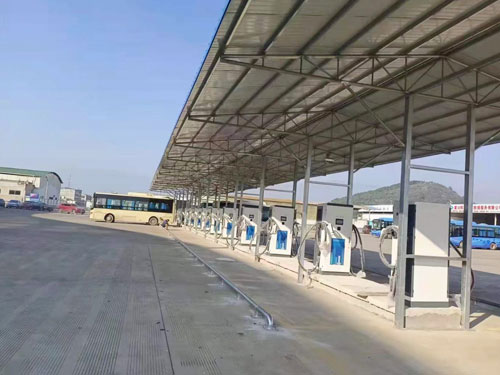- Visitors:0 Views
- Time:2025-02-12
electric car charging stations commercial
Electric car charging stations commercial refer to commercial stations that provide charging services specifically for electric vehicles. They are usually built in public places, such as shopping malls, parking lots, highway service areas, etc., to facilitate electric vehicle users to charge. The following is some introduction to commercial electric car charging stations:
1. Charging station types and facilities
1.1. Commercial electric car charging stations mainly include two types: fast charging stations and slow charging stations. Fast charging stations are usually equipped with high-power DC chargers, which can quickly replenish the power of electric vehicles in a short time, suitable for long-distance travel or users who are in urgent need of power replenishment. Slow charging stations are mainly equipped with AC chargers, which have a relatively slow charging speed, but are more suitable for use at night or for long-term parking.

1.2. In terms of charging station facilities, in addition to chargers, there will also be user service areas, providing comfortable rest seats, free wireless networks, televisions, newspapers and magazines and other entertainment facilities, as well as catering services, such as cafes, convenience stores, etc., to meet users' rest and entertainment needs during charging.
2. Business models and profit paths
The business models of commercial electric car charging stations are diverse, mainly including the following:
2.1. Operator-led model: The operator is responsible for the construction, operation and maintenance of the charger, and charges fees by providing charging services to electric vehicle users. This is the most common business model in the current market.
2.2. Car manufacturer-led model: Car manufacturers build chargers through themselves or their partners to provide more convenient and efficient charging services. This model helps car manufacturers better understand user needs and provide more accurate charging services.
2.3. Policy subsidy model: The government encourages the construction and operation of chargers by providing financial subsidies, tax incentives, etc. This helps to reduce the construction and operation costs of chargers and increase the popularity and utilization rate of chargers.
2.4. Value-added service model: Operators gain revenue by providing other value-added services on the basis of providing charging services. These value-added services can include advertising, vehicle maintenance, insurance sales, etc.
In terms of profit channels, in addition to the basic charging service fee, commercial electric car charging stations can also achieve profits through advertising revenue, site rental revenue, retail revenue and other methods.
If you want to know more about "electric car charging stations commercial", you can consult us online or by email (sales@hjlcharger.com).
Recommended Reading
- 2024 Mid-Autumn Festival Holiday Notice2024-09-14
2024 Mid-Autumn Festival Holiday NoticeThe bright ...
- Hongjiali, We sincerely invite you to participate ...2024-05-14
May is the prelude to summer a
- Happy Chinese New Year! Schedule Notice2023-05-23
Happy Chinese New Year!Schedul
- charging station uk2025-04-11
Charging station uk: three keys to crack charging ...
- ev charging station in usa2024-02-21
EV charging station in usa, el
- us ev charging infrastructure2025-03-13
With the global emphasis on reducing greenhouse ga...
- What does the EVSE stand for?What is the differenc...2025-02-26
What does the EVSE stand for? What is the differen...
- evse charging stations2024-03-25
Hongjiali is a leading electri
- how do you pay for electric car charging stations2024-01-12
How do you pay for electric ca
Hot Products
-
ev supercharger
There are three levels of EV charging; L
Get last price
-
22kw charging station
The 22kw charging station is suitable fo
Get last price
-
public electric car charg...
Analyze EV infrastructure and identify c
Get last price
-
80KW and 120KW DC Fast El...
The 80KW and 120KW dc fast electric ev c
Get last price



